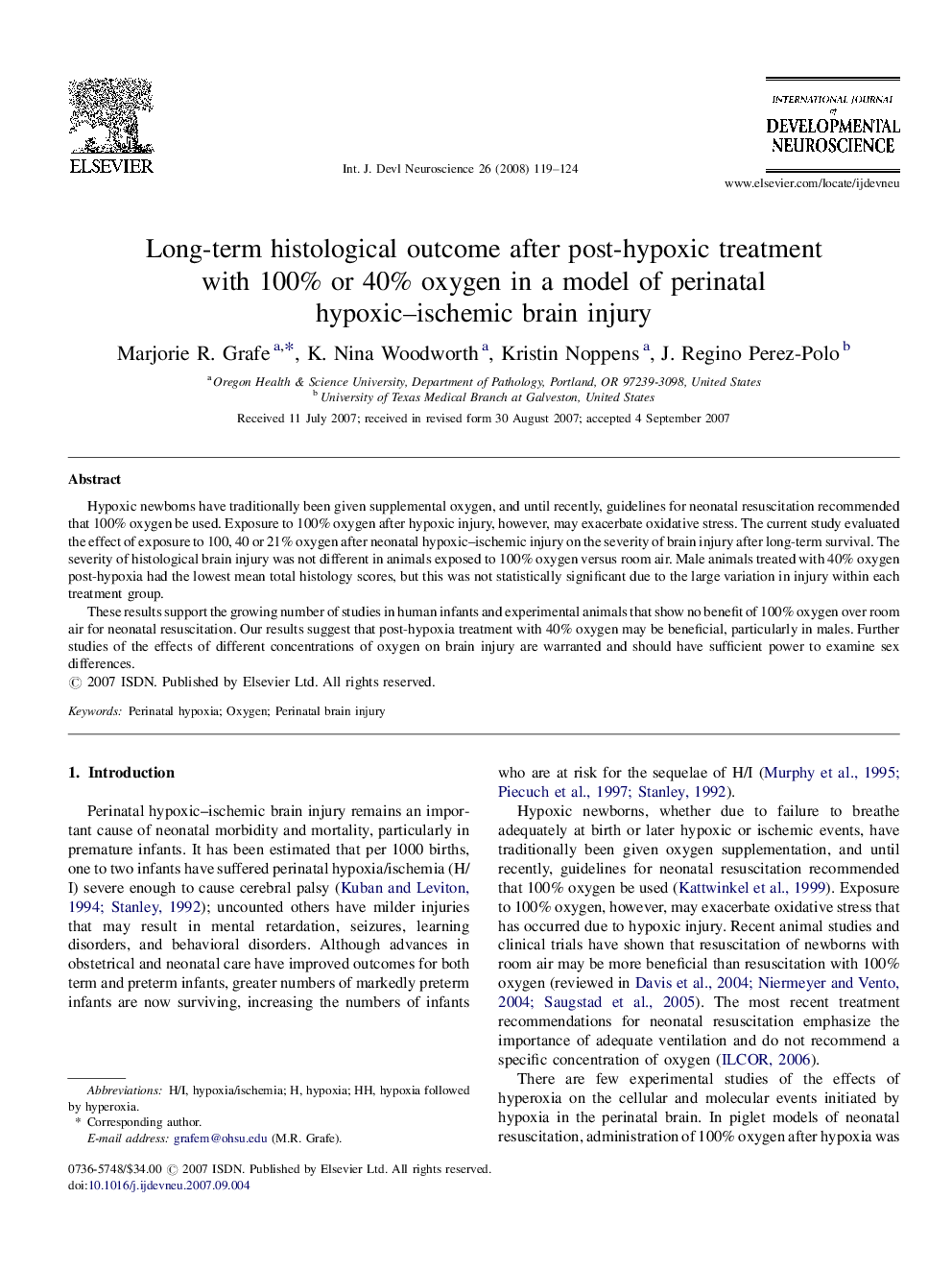| Article ID | Journal | Published Year | Pages | File Type |
|---|---|---|---|---|
| 2787137 | International Journal of Developmental Neuroscience | 2008 | 6 Pages |
Hypoxic newborns have traditionally been given supplemental oxygen, and until recently, guidelines for neonatal resuscitation recommended that 100% oxygen be used. Exposure to 100% oxygen after hypoxic injury, however, may exacerbate oxidative stress. The current study evaluated the effect of exposure to 100, 40 or 21% oxygen after neonatal hypoxic–ischemic injury on the severity of brain injury after long-term survival. The severity of histological brain injury was not different in animals exposed to 100% oxygen versus room air. Male animals treated with 40% oxygen post-hypoxia had the lowest mean total histology scores, but this was not statistically significant due to the large variation in injury within each treatment group.These results support the growing number of studies in human infants and experimental animals that show no benefit of 100% oxygen over room air for neonatal resuscitation. Our results suggest that post-hypoxia treatment with 40% oxygen may be beneficial, particularly in males. Further studies of the effects of different concentrations of oxygen on brain injury are warranted and should have sufficient power to examine sex differences.
